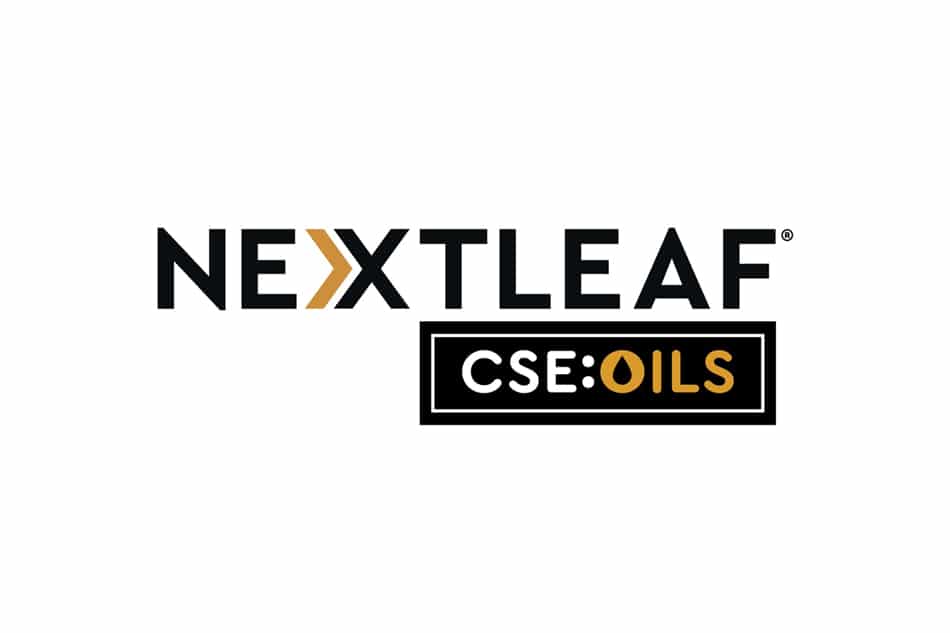The Company’s Canadian and US patents facilitate future pharmaceutical joint development agreements.
Vancouver, British Columbia–(Newsfile Corp. – July 15, 2020) – Nextleaf Solutions Ltd. (CSE: OILS) (OTCQB: OILFF) (FSE: L0MA) (“Nextleaf“, “OILS“, or the “Company“) Canada’s most innovative cannabis extractor, announced today that the Canadian Intellectual Property Office has granted the Company its 40th issued patent. This latest patent pertains to the acetylation of cannabinoids. More specifically, the patent describes a process for acetylating delta 9-tetrahydrocannabinol (“THC”) and its subsequent refinement into THC-O-Acetate using salting-out assisted liquid-liquid extraction and distillation techniques.
“Nextleaf’s patented process to produce THC-O-Acetate enables the standardization of a more potent analog of THC, an alternative option to experience the unique medicinal benefits, associated with targeted drug delivery,” said Nextleaf CEO Paul Pedersen. “The potency of THC-O-Acetate is said to be 300% that of THC with potentially psychedelic features,” continued Nextleaf CEO Paul Pedersen.
Prodrugs utilize various physical and chemical modifications to improve features of active drugs. Maintaining the integrity of the molecule and its ability to deliver drugs to precisely targeted areas in the body may significantly reduce consumption, as well as reduce unintended side effects.
“To the best of my knowledge, Nextleaf is the first company in the world, publicly traded or private, to be issued patents for the production of THC-O-Acetate in any jurisdiction, including the United States and Canada,” said Taran Grey, Director of Intellectual Property.
On February 27, 2020 the Company announced that it had received a related patent in the United States. By receiving this patent in Canada, the world’s foremost jurisdiction for federally regulated cannabis, an outstanding opportunity is presented with fewer barriers to entry for pharmaceutical firms looking to manufacture and distribute cannabinoid formulations and prodrugs in a federally legal jurisdiction.
Nextleaf has a 100% success rate obtaining issued patents from its pending patent applications, compared to averages of less than 50% for life science companiesI. The Company expects opportunities to commercialize this latest patent through IP licensing agreements with pharmaceutical companies; and, by producing IP protected cannabinoid products as legally permitted by Health Canada.
About Nextleaf®
OILS is Canada’s most innovative cannabis extractor, developing technology for extracting and distilling cannabinoids. Nextleaf’s industrial-scale extraction plant in Metro Vancouver has a design capacity to process 600 kg per day of dried cannabis biomass into distilled oils. The Company owns a portfolio of 40 issued patents and over 60 pending patents for the extraction and distillation of cannabinoids. Nextleaf Solutions commercializes its patent portfolio through IP licensing, and the wholesale of THC and CBD oils through Nextleaf Labs, a Health Canada licensed standard processor.
Nextleaf Solutions trades as OILS on the Canadian Securities Exchange, OILFF on the OTCQB Market in the United States, and L0MA on the Frankfurt Stock Exchange.
Follow OILS across social media platforms: Twitter, LinkedIn, Facebook, and Instagram. www.nextleafsolutions.com
For further information, please contact:
604-283-2301 (ext. 219)
[email protected]
On behalf of the Board of Directors of the Company,
Paul Pedersen, CEO
Certain statements contained in this press release constitute “forward-looking statements”. All statements other than statements of historical fact contained in this press release, including, without limitation, those regarding the Company’s ability to capitalize on its IP portfolio, expectations regarding lower costs resulting from utilization of the Company’s technology, changes in the global market for cannabinoid-based products, the potential for shareholder value creation through the formalization and protection of IP, the Company’s future profitability and expected revenue growth, the long-term sustainability of the Company’s business model, the ability to scale the Company’s business globally, the Company’s strategy, plans, objectives, goals and targets, and any statements preceded by, followed by or that include the words “believe”, “expect”, “aim”, “intend”, “plan”, “continue”, “will”, “may”, “would”, “anticipate”, “estimate”, “forecast”, “predict”, “project”, “seek”, “should” or similar expressions or the negative thereof, are forward-looking statements. These statements are not historical facts but instead represent only the Company’s expectations, estimates and projections regarding future events. These statements are not guarantees of future performance and involve assumptions, risks and uncertainties that are difficult to predict. Therefore, actual results may differ materially from what is expressed, implied or forecasted in such forward-looking statements. Additional factors that could cause actual results, performance or achievements to differ materially include, but are not limited to the risk factors discussed in the Company’s MD&A for the most recent fiscal period. Management provides forward-looking statements because it believes they provide useful information to investors when considering their investment objectives and cautions investors not to place undue reliance on forward-looking information. Consequently, all of the forward-looking statements made in this press release are qualified by these cautionary statements and other cautionary statements or factors contained herein, and there can be no assurance that the actual results or developments will be realized or, even if substantially realized, that they will have the expected consequences to, or effects on, the Company. These forward-looking statements are made as of the date of this press release and the Company assumes no obligation to update or revise them to reflect subsequent information, events or circumstances or otherwise, except as required by law. The CSE has not reviewed, approved or disapproved the contents of this press release.
I Michael Carley, Deepak Hegde & Alan Marco, What is the Probability of Receiving a U.S. Patent?, 17 Yale J.L. & Tech (2015). Available at: https://digitalcommons.law.yale.edu/yjolt/vol17/iss1/5














